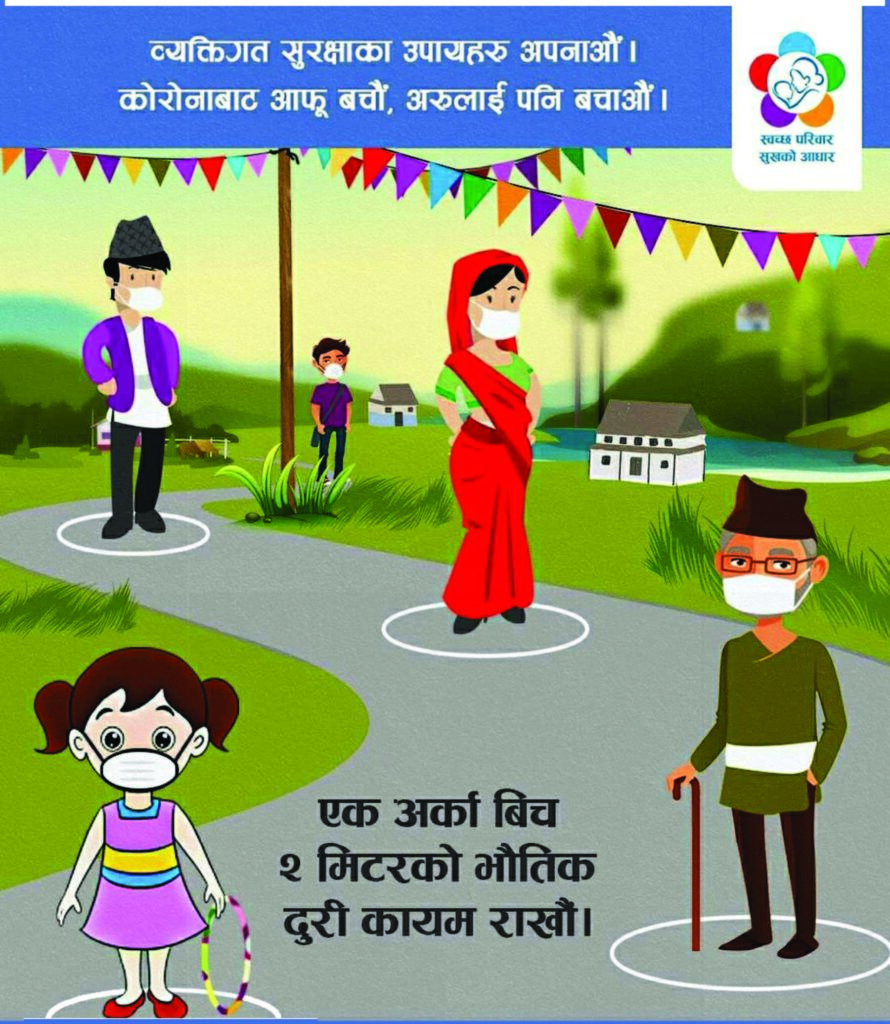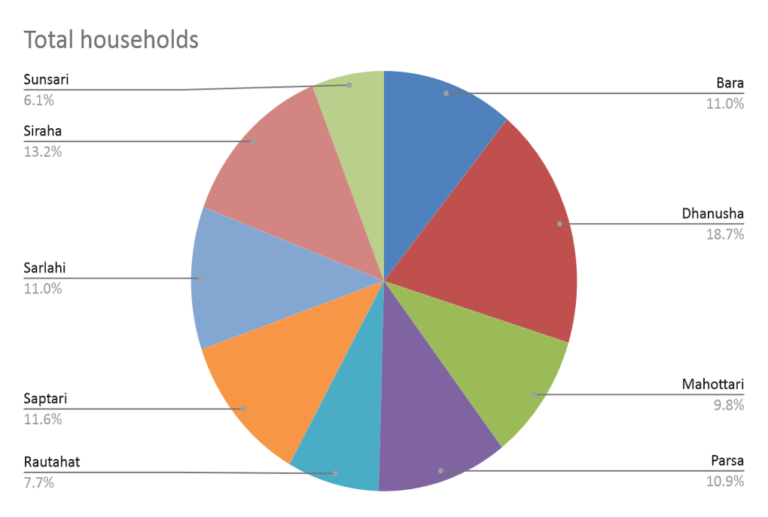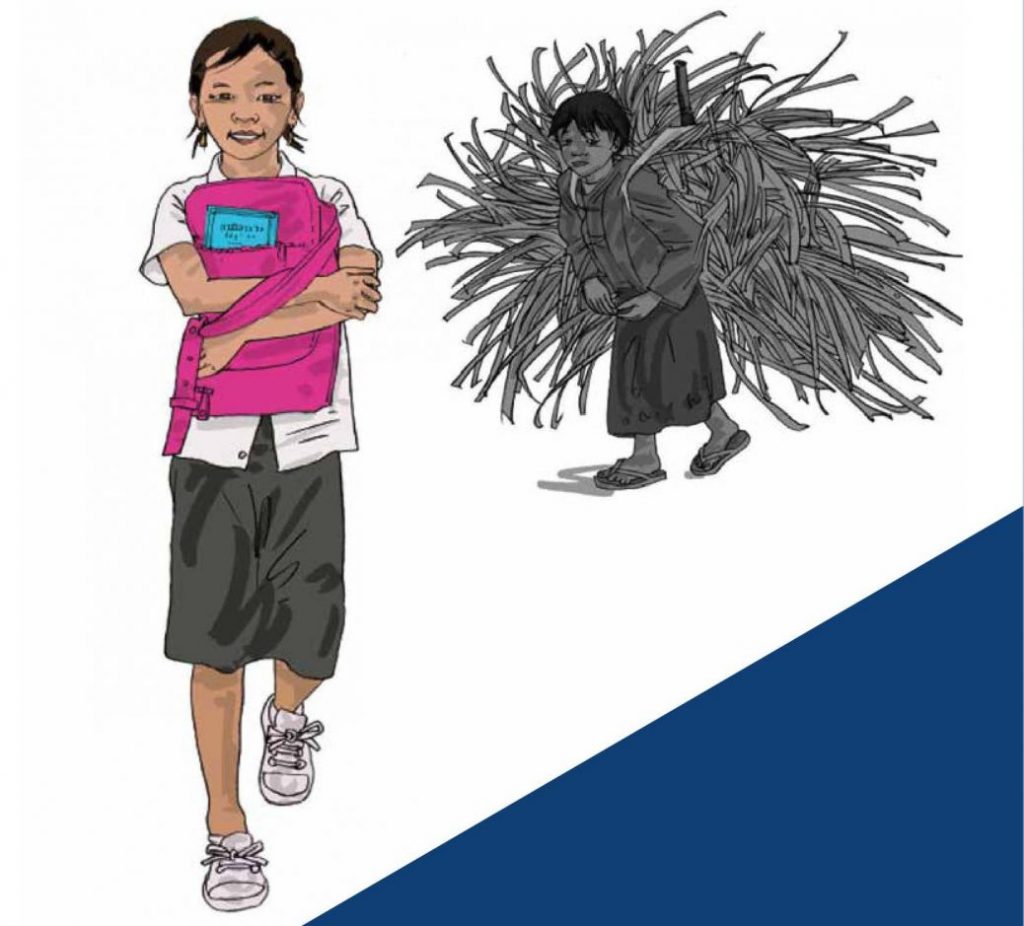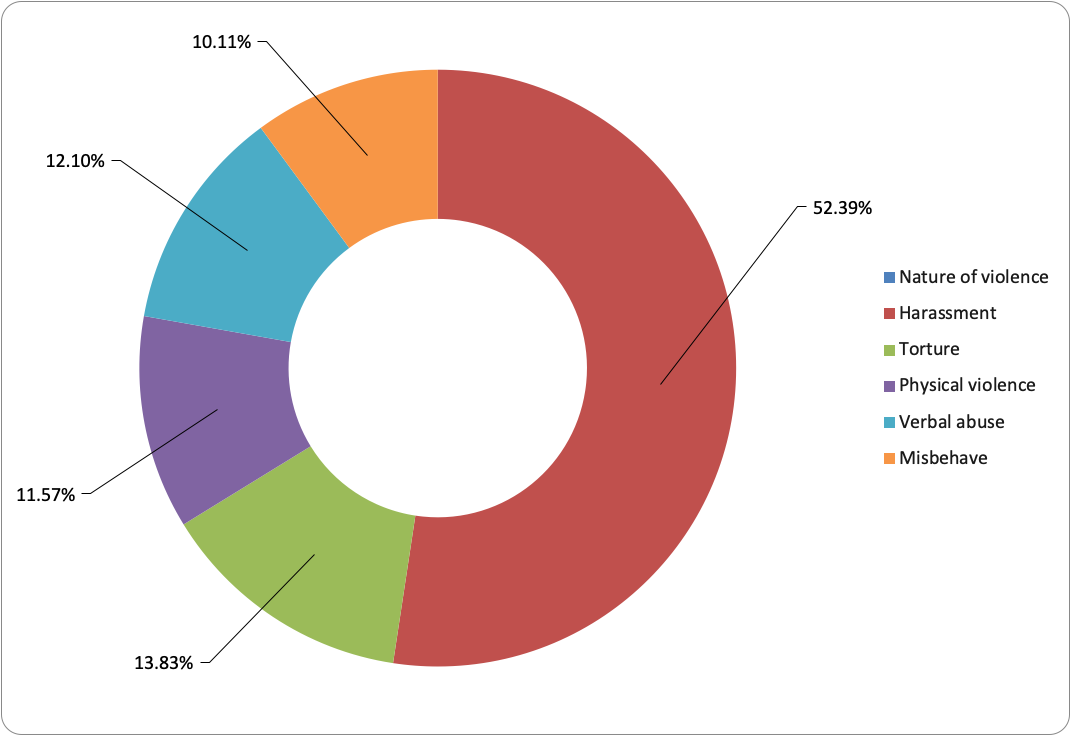| 1 | Recovery of living condition for the most vulnerable people affected by COVID-19 in Nepal | Dhanusha | Non Food Item (NFI) - Hand Pump, Toilet construction, WASH Item, Sapling) Cash (Startup fund to 150 HHs) | 2480 HHs 50 HH- Hand Pump, 50 HH- Toilet, 230 HH WASH item, 2000 HHs- Sapling, 150 HHs- Startup fund) | LWF |
| 2 | Blanket Supplementary Feeding (BSFP) Program in selected municipalities of Province 2 | Bara, Parsa | Food Item (Wheat Soya Blend -WSB distribution for 13,838 | 13,838 HHs (focusing Pregnant & Lactating women -PLW, 6-23 months children) | World Food Program |
| 3 | Rapid Response Program | Parsa, Bara, Rautahat & Sarlahi | Food Item NFI (Hygiene Kit, Health & Safety Kit) | 4500 HHs | Street Child |
| 4 | Vocational Skill Training Program to Safeguard the Livelihoods of people made most vulnerable by COVID-19 in province-2 | Dhanusha, Siraha & Mahottari | Food Item NFI (Soap) | 50 HHs | UNESCO |
| 5 | Provision of follow up support to out of schools adolescent's girls and young women who completed vocational skills training in Rautahat and Sarlahi district | Rautahat & Sarlahi | NFI (Soap and Mask) | (1194 HHs) 194 HHs- Soap distribution in Sarlahi 1000 HHs- Mask distribution in Rautahat) 40 Soap (Balara Municipality-2, Sarlahi) | UN Women |
| 6 | Relief Distribution in Rautahat district | Rautahat | Food Item & NFI (WASH & Hygiene Kit) | 437 HHs | UNESCO |
| 7 | Shashakta | Dhanusha | Food Item (Horlicks, ghee, eggs, pulses, beans, locally available green vegetables) NFI: (WASH Support - Soap, Mask, towel, hand wash, hand sanitizer, bucket, sanitary pad, contraceptive items) Kitchen gardening support - vegetable seed, Fruit plant), Agro farming support) | 540 HHs | Kindernothilfe (KNH) |
| 8 | Promoting citizens empowerment and inclusive democracy in 2 Municipalities of Rautahat and Saptari | Rautahat & Saptari | Food item & NFI (WASH Support) | 420 HHs | Welthungerhilfe (WHH) |
| 9 | Regional Program on Multi Sectoral Approach Promote Nutrition Smart Village in Bangladesh, Nepal, India (Phase I) | Rautahat & Saptari | Food Item NFI (WASH Support) | 400 HHs | Welthungerhifle (WHH) |
| 10 | Promoting Citizen Empowerment and Inclusive Democracy in Province 2 | Rautahat, Saptari & Siraha | Response (Train LG on the use of PPE Kit, & its disposal) NFI (Thermal Gun) | 6 Municipalities (Isnaath, Baudhimai Rajgadh Bishnupur Kalyanpur, Karjanha) | European Union (EU) |
| 11 | Building Livelihood Resilience and Nutrition Security in the Kamala River Basin in Siraha district | Siraha | NFI (WASH Support) | 3 Municipalities (45 wards) | Welthungerhilfe (WHH) |
| 12 | Promoting Quality Education for Girls and Marginalized Children of Dhanusha Terai | Dhanusha | NFI (WASH &Hygiene Kit Support) | 4 municipalities (92 Schools) | Norwegian Embassy |
| 13 | Sister for Sister Education | Dhading | NFI (Safety Kit, WASH kit) | 2706 HHs | Voluntary Service Overseas (VSO) |
| 14 | Early Grade Quality Improvement Program (EQUIP) | Parsa | Recovery (Psychosocial First Aid training (PFA) NFI- (Disinfecting liquid, Spray machine, storybook, dictionary, steel book rack) | 9 municipalities (33 Schools) | Voluntary Service Oversea (VSO) |
| 15 | Breaking the Bond: Freedom through Education and Economic Empowerment for Musahar Girls in Nepal | Mahottari, Dhanusha & Siraha | Food Item | 400 HHs | Street Child |
| 16 | Women Health Project | Dhanusha, Sarlahi, Parsa, Rautahat and Siraha | NFI (PPE Set) | 23 OK center / Health Facility | Population Service International (PSI) |




















